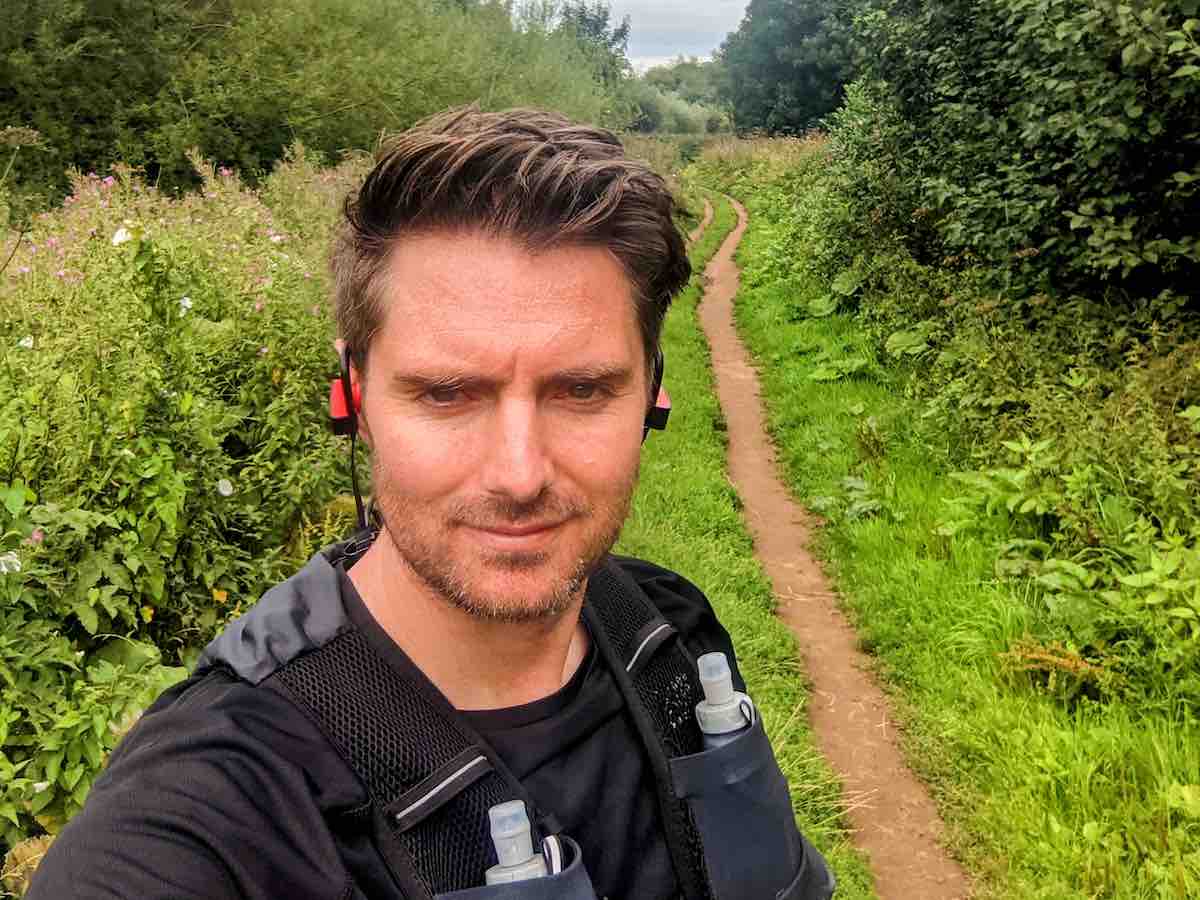Raw, unforgiving and wonderfully exhilarating, trail running is the ultimate outdoor exercise.
Heading off-road can help to unplug from work, connect with nature and level up your fitness.
However, even for those with an in-built sense of adventure, we could all do with a bit of help on how to start trail running.
In this guide we’ll cover topics such as:
- the visceral stimulation that awaits you
- how to research and prep for a trail run
- trail conditions throughout different seasons
- trail running kit, from trail shoes to GPS watches
- how to transition from road running
- how to tackle more technical trails
Essentially, everything you need to get started with trail running or work your way up to the best trail run routes in Europe, and beyond.
What Is Trail Running? Free Range Runs in Nature
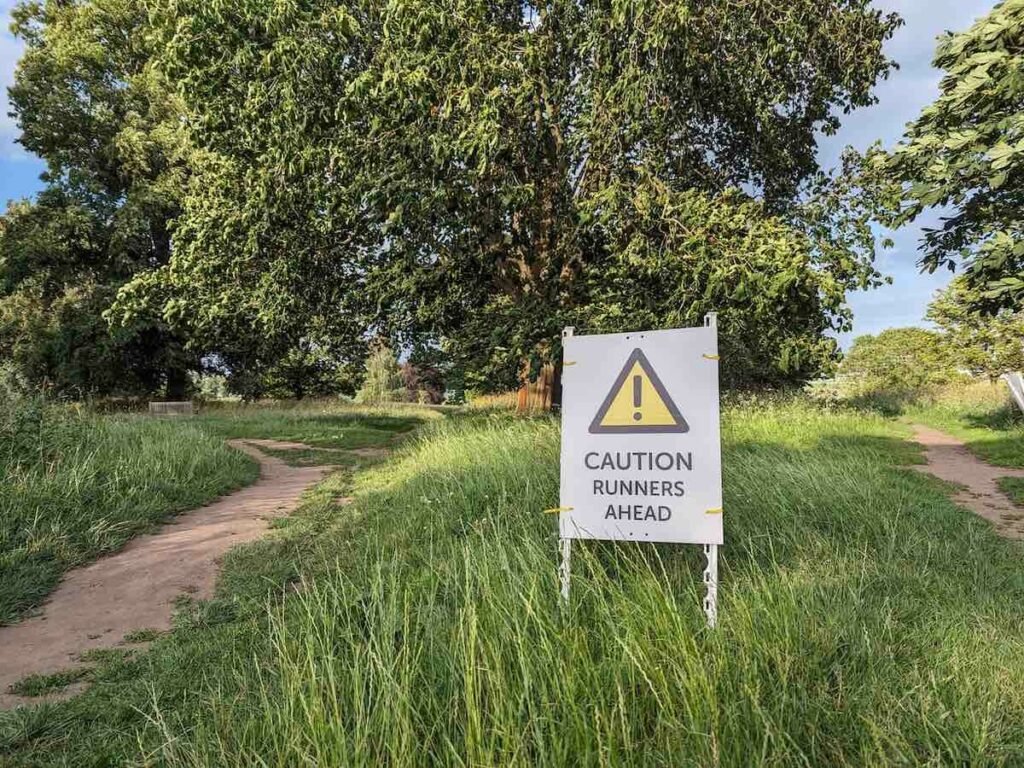
Trail running involves running off road and into the great outdoors. It involves a variety of natural terrains, such as forest trails, dirt tracks, up rocky hills, and through grass fields.
An escape from the monotony of road running, trail running exposes you to ever-changing landscapes and nature’s obstacles like roots, rocks, and even wildlife. As a result, your body and mind are constantly engaged, making this an excellent form of exercise both physically and mentally. Trail running is not only about conquering challenging terrain but also immersing yourself in the beauty and serenity of the wilderness.
What I love about trail running is its adaptability. Every run an education and you choose your own adventure, whether it’s leisurely runs through gentle forest trails to pushing your max heart rate up rugged mountains. There’s something for all abilities.
Trail Running vs Road Running – What’s the Difference?
Road running is where most of us begin – it can be done anywhere, anytime, and is a convenient way to stay active all year round. But it can have plot twists too…
The hustle and bustle of city life. The concentration of landmarks. People watching. Beautifully manicured parks. A feast for the eyes. Stopping at a coffee shop. A fun way to explore your local neighborhood. Running fun around every corner.
Another one of road running’s plusses is speed. Road running can repay itself on the trails, as it gives you a better VO2 engine for climbing those hills. In return, the trickier variables of trail running can help build endurance and resilience for road races where the weather changes or you’re facing inclines in the later stages.
The injuries often differ: stress fractures of road running swapped for slipping on unstable ground or tripping over obstacles.
Like many things, the sweet spot is often in combining the two. Whether that’s running to the trail head on road or dialing up trail running in the sunnier months.
10 Benefits of Trail Running – Fun, Free & Unpredictable
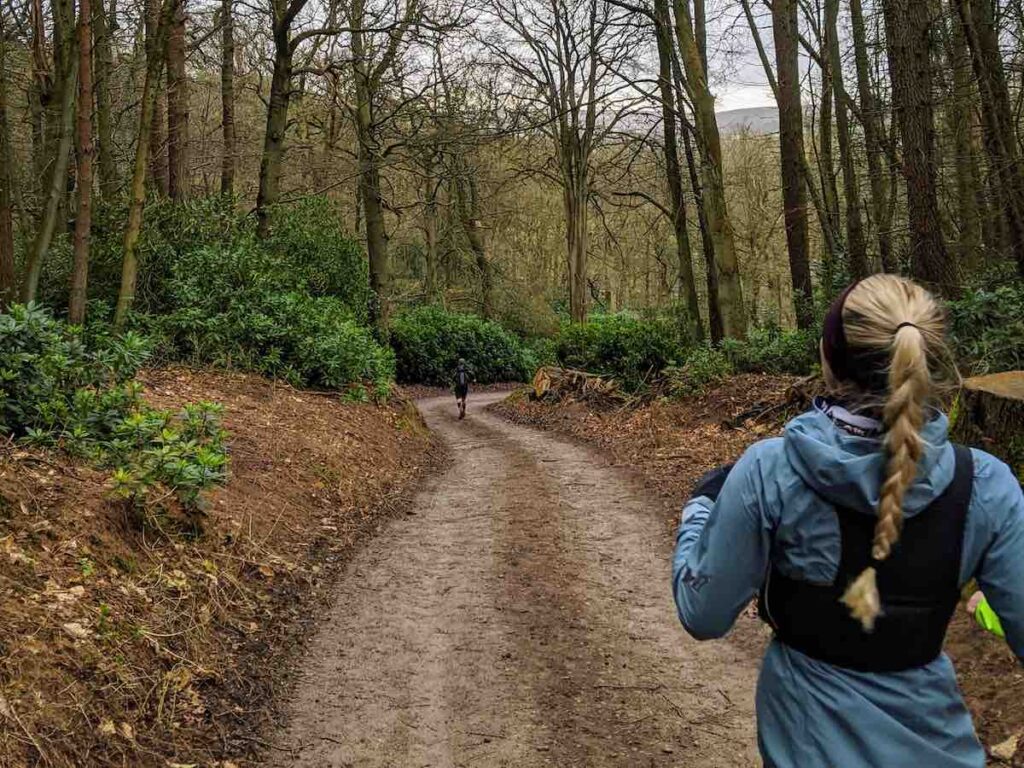
- Being immersed in nature – reduces stress and anxiety, improving your overall mental wellbeing
- It’s a great leveler – more technical trails require different running skillsets to road running
- More muscular endurance – uneven terrain and varying elevations force your body to work harder, engaging more muscle groups and improving balance, strength, and agility
- Better for joints – uneven surfaces and softer ground can reduce the impact on your joints, reducing the risk of injury
- Keeps things interesting – adds variety to your regular running routine and keep your running mojo
- More of a mental break – the answers you’re looking for can often be found on the trail (read: How Running Helps Us Think)
- Visual stimulation – bursting with moments of awe, such as running under breathtaking sunsets
- Learn to grind out runs – trail runners are more well-rounded and resilient in unfavorable race conditions
- Less crowded – far fewer people or cars to contend with
- Choose your own adventure – on beaches, up hills, national parks, along riversides
Plus, one bonus benefit of trail running: trail races finishers will know the refreshments are always the best… homemade cake anyone?
Related Reading: Turn Wander Into Wonder with an Awe Run
💌 Inspiring Run Stories.. in Your Inbox
How to Start Trail Running – Tips & Tricks

Your first trail run is likely to be a shock to the system. In the best possible way.
Here’s a few ways you can make the transition as smooth as possible:
- Appropriate trail running footwear – trail shoes provide better traction, stability and protection (more info in the next section)
- Start small to give your muscles and joints time to adapt – longer, more technical trails will always be there
- Don’t try to run it all – it’s not all run-able terrain on a trail, so go slow, walk, go over, through when needed
- Do your research – minimise the risk of getting lost on a trail by printing or downloading the map to your GPS watch; consider picking a loop on for your first few runs to avoid getting lost
- Always keep safety in mind – tell someone your planned route, carry food and water, and be prepared for changes in weather or trail conditions
- Look where you’re going – concentrate and scan for any potential hazards such as rocks, holes, tree roots and branches
- Stay aware of your surroundings – Keep track of any trail markers or unique features you pass in case you lose your bearings
- Practice reading the terrain and map on each run – this will help you become more comfortable with your navigation skills and gain confidence in your ability to tackle new trails
- Ditch pace as your main KPI – a running watch with a heart rate monitor can be a helpful tool to gauge your exertion on a trail
- Learn good trail running technique – maintain an upright posture, slightly lean forward from the ankles, and keep your arms relaxed and close to your body. When running uphill, shorten your stride, and use your arms to help propel you forward. Conversely, when running downhill, lean slightly forward and let gravity assist your descent, taking care not to overstride or slam your foot into the ground.
- Be consistent – trail running can be addictive, so try to schedule your running sessions at regular intervals without overdoing it, and allow for rest days to promote recovery
- Lower your volume – or leave your headphones altogether as you’ll want to really connect with nature and be alert to other trail users e.g. a mountain bike racing downhill
- Take a change of clothes and shoes if driving – expect lots and lots of mud
- Trail running for beginners can start as simple as a run around your local park or well groomed trails
- Most importantly: enjoy the epic views!
Get into trail running and I promise you won’t turn back.
Choosing the Right Trail Running Gear
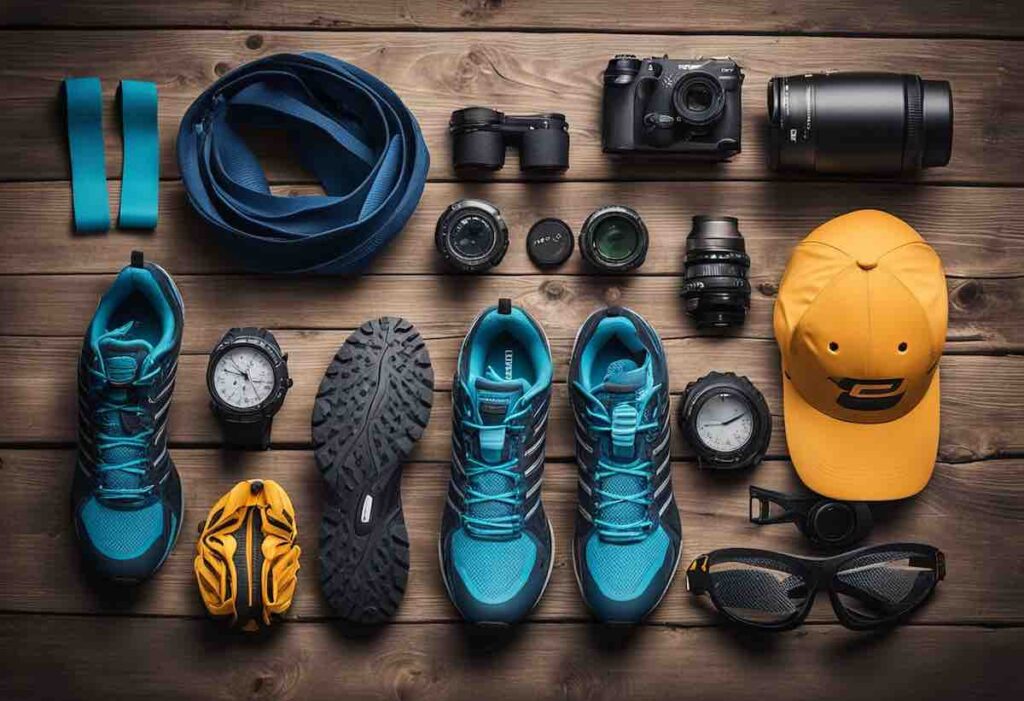
First, some good news… there’s a lot of overlap with road running gear.
However, there’s a few trail running staples you’ll need to invest in to ensure maximum comfort, safety, and performance.
Trail Running Shoes: The first and most crucial piece of trail running gear is a good pair of trail running shoes. These shoes offer better traction, support, and protection compared to road-running shoes, making it easier to navigate uneven terrains, roots, rocks, and slippery mud. Look for features like deep lugs for grip, stiffer soles for stability, and reinforced uppers for durability.
Clothing: Lightweight, breathable, and moisture-wicking fabrics are essential for trail running. Avoid cotton, as it retains moisture and can cause chafing. Opt for synthetic or wool running socks, and trail running shorts or leggings. Depending on the weather and trail conditions, you may also need a waterproof running jacket, gloves, and a hat as cover is not always guaranteed.
Running Hydration Vest: Staying hydrated is crucial, especially on longer trail runs. Hydration packs and vests offer an accessible and convenient way to carry water, snacks, your phone, and even a light jacket. I use the Salomon Active Skin 8.
Safety and Navigation: Carry a map and compass or GPS watch to track your progress and stay on course. Some GPS watches also provide valuable information like distance, pace, and elevation. Always have a fully charged phone for emergencies and a headlamp for visibility if running first thing in the morning or low visibility before darkness.
Trekking poles – Even experienced trail runners carry poles to speed up their ascents and descents. Many models fold down and will fit into your backpack for the flats.
Optional extras: Longer trails require preparation for more eventualities. Consider packing extras such as:
- a small first aid kit – especially for blisters and personal medication
- lightweight, nutrient-dense snacks like energy gels and electrolyte tablets
- toilet roll and sanitiser for ultras
- cash for snacks on remote trails (I got caught out when running Hadrian’s Wall ultra)
- running gaiters for added protection against heavy mud or snow
Don’t Get Caught Short – Proper Hydration and Fuel on Trails
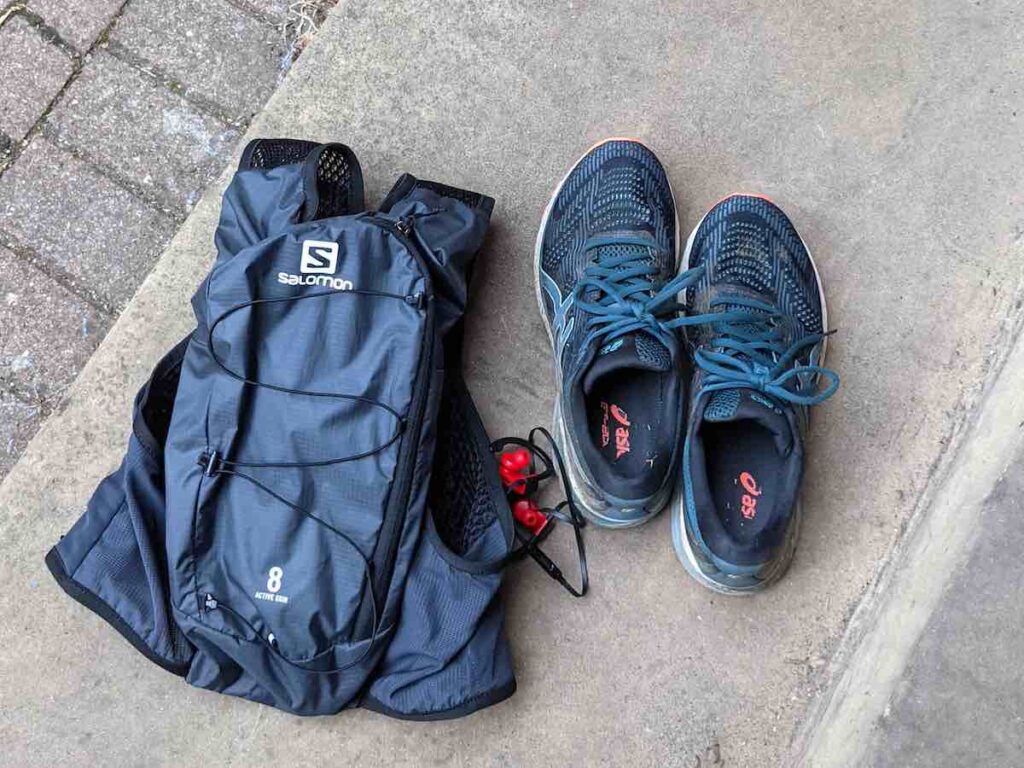
When trail running, you’ll burn approximately 600-1,000 calories per hour. On remote trails, your options for refueling on the go are likely to be slim, so it’s important to pack ahead. I’d recommend:
- keep up energy levels up by consuming 150-300 calories per hour from carbohydrates, like gels or sports drinks
- Include proteins, as they help slow down the digestion of carbohydrates, extending their energy release – vital for those running ultra-distances
- Aim to drink one litre of water for every 1,000kcal you burn and replenish your electrolytes (with sports drinks or adding electrolyte tablets to your water) to help balance fluid levels, regulate muscle contractions, and maintain a healthy pH in the body
- Or go organic with other nutrient-dense snacks like bananas or nuts
Find A Trail Running Adventure – Useful Apps
As you venture off road, having the right apps on your phone can make a huge difference to your experience. These apps will help you plan local trail routes, track your progress, and pay it forward for other trail runners.
Here are some of the best trail running apps:
AllTrails: With more than 200,000 trail maps, you’re spoiled for choice. In addition to trail maps, AllTrails provides detailed information on trail features, difficulty levels, and user reviews. You can also use the app’s tracking feature to record your runs and share them with friends.
Strava: Strava is a popular and reliable app for tracking your runs and other outdoor activities. It not only records your running distance, time, and speed, but also allows you to set goals, compete against other runners, and join virtual challenges. Strava also has a segment feature, which is particularly useful for trail running, allowing you to compare your performance on specific trail sections with other users.
Gaia GPS: Gaia GPS is an excellent mapping and navigation app that’s perfect for trail running enthusiasts. It offers detailed topographic maps and satellite imagery, making it easy to plan your route and navigate unfamiliar terrain. The app also has an offline mode, allowing you to download maps ahead of time and access them without an internet connection – crucial if you’re heading into remote areas.
Trail Run Project: Trail Run Project is another incredible app for discovering new trail running adventures. You can use the app to search for trails near your location or browse its extensive database for inspiration. Each trail listing includes a description, maps, elevation profiles, and user ratings. The Trail Run Project app also has a GPS tracking feature, so you can keep track of your run and never get lost.
With these trail running apps in your arsenal, you’ll have all the resources you need to plan, navigate, and track your trail running adventures. So, save any intriguing routes and you’ll know how to start trail running with confidence!
In Conclusion: How to Get Into Trail Running
Equal part challenging and stimulating, there’s so much to love about trail running.
By following these tips for how to start trail running, any initial trepidation will give way to the most liberating form of exercise. You’ll discover new routes. New perspectives. And be able to find wonder and solace in the most incredible places on your doorstep.
As you embark on your trail running journey, it’s essential to be equipped with the right gear and a respect for your natural surroundings. Take the time to understand the local trails and their difficulty levels, ensuring your safety, and preserving the environment for future generations.
Trail running is a thrilling and rewarding pursuit that combines challenge, adventure, and the beauty of the great outdoors.
So lace up those trail shoes, unleash your inner adventurer, push your physical limits, and experience the unparalleled tranquility of nature.
Let me know where your trail running adventures take you in the comments!
Related reading: How to Set New Running Goals

